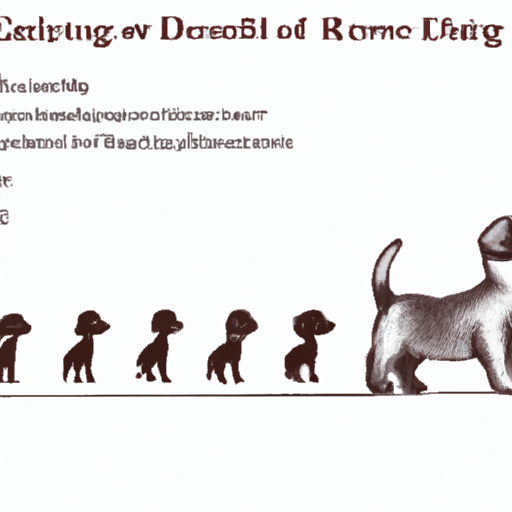Understanding Your Dog’s Growth Cycle
Just like humans, dogs don’t grow at the same rate all their lives. In your role as a caregiver, understanding your dog’s growth cycle can be key to ensuring they’re healthy and happy.
During the first few weeks of life, puppies grow incredibly quickly. After that, their growth rate begins to slow, but they continue to grow until they reach their full adult size. This can usually take anywhere from 12 to 24 months, depending on the breed and individual dog.
Factors That Influence Your Dog’s Growth
There are several factors that can influence when your dog stops growing:
- Breed: Larger breeds tend to grow more slowly than smaller breeds. For example, a Great Dane might not reach its full adult size until it’s two years old, while a Chihuahua might be fully grown by the time it’s 10 months old.
- Nutrition: Proper nutrition is essential for a dog’s growth. Dogs that are underfed or overfed can experience growth issues.
- Health: Certain health issues can affect a dog’s growth. For example, dogs with hypothyroidism can experience delayed growth.
How to Know If Your Dog Has Stopped Growing
As a caregiver, you may wonder how to tell if your dog has stopped growing. Here are some signs to look out for:
- Their paws, which grow faster than the rest of their body, are in proportion with their body.
- They have lost their puppy fur and have their adult coat.
- Their energy levels have stabilized.
However, the most accurate way to know if your dog has stopped growing is by consulting with a veterinarian.
Managing Your Dog’s Growth
As a caregiver, it’s critical that you manage your dog’s growth properly. Here are some tips:
- Ensure they get a balanced diet appropriate for their breed and size.
- Keep them active with regular exercise.
- Regular vet check-ups to monitor their growth and catch any potential health issues early.
FAQ
Q: When do smaller breeds typically stop growing?
A: Most small breeds stop growing around the 6 to 8 months mark.
Q: Can a dog’s growth be stunted?
A: Yes, poor nutrition or certain health conditions can stunt a dog’s growth.
Q: How can I tell if my dog is overweight?
A: Your vet can provide the best advice, but generally, if you can’t feel your dog’s ribs easily, they might be overweight.
Q: What should I do if I think my dog isn’t growing properly?
A: Always consult with a veterinarian if you’re concerned about your dog’s growth.
In conclusion, there is no fixed timeline for when dogs stop growing. It can vary based on a variety of factors, including breed, diet, and overall health. As a caregiver, your best bet is to maintain regular vet check-ups and keep an eye on your dog’s overall physical condition and behavior.



